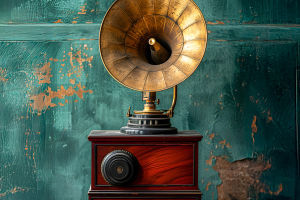We all admire the beauty of flowers, and one of the most artistic ways to enjoy them is through flower arranging. Flower arranging is a form of art that involves placing flowers, branches, and foliage into containers for decorative purposes.
This art form has a long history, and various countries have their own unique styles and traditions. In fact, China’s "Zunsheng Baji" is considered the earliest known written work on flower arranging, dating back to ancient times. Let’s explore how flower arranging has evolved and its significance across different cultures.
Take Your Floral Arrangement From Amateur To Pro By Designing With These Six Elements
Video by Ellen Frost
Chinese Flower Arranging: The Early Beginnings
In China, flower arranging dates back to the Han Dynasty. During the reign of Emperor Wu of the Han Dynasty, foreign exotic flowers and plants began to enrich the flora of the central plains. To accommodate these new plants, Emperor Wu established one of the largest botanical gardens in human history, known as Shanglin Garden. This shows that flower arranging was likely already a popular practice in the royal court around 200 BCE.
By the Eastern Han Dynasty, flower appreciation had spread beyond the court and gardens to private homes. People not only enjoyed flowers in gardens and courtyards but also brought them indoors to appreciate their beauty in various forms. The Han Dynasty "Green Glazed Pot with Flower Trees" is a prime example of this early floral appreciation. This artifact from the Taipei Museum features a flower tree in a pot, symbolizing the harmony between nature and human creation. Such artifacts from the Han Dynasty reflect an early understanding of flower arranging and its symbolic significance in Chinese culture.
Flower Arranging in the Tang and Song Dynasties
By the Tang Dynasty, flower arranging had become highly popular, especially in the royal court and temples, where flowers were offered as part of spiritual ceremonies. It was during the Song Dynasty, however, that flower arranging truly reached the masses and became one of the "Four Arts" practiced by scholars. The beauty of flowers was often celebrated in poetry and paintings, as flower arranging was not just about decoration, but a form of self-expression and cultural identity.
Flower Arranging in Japan: Ikebana
In Japan, the art of flower arranging is known as Ikebana. This art form has its roots in the Nara period, when flowers were offered to Buddha as part of Buddhist rituals. During the Heian period, Ikebana evolved into an independent art form. Unlike Western flower arranging, where flowers take center stage, Ikebana emphasizes simplicity and the beauty of natural elements.
Ikebana typically uses a minimal amount of flowers, focusing on the stems, branches, and leaves, with the flowers often representing the past, present, and future. The arrangement reflects the Japanese aesthetic of nature’s cyclical beauty, symbolizing the eternal life of the universe. The calm and meditative approach to Ikebana invites practitioners to appreciate the inherent beauty of flowers and their connection to the natural world.
Flower Arranging in Korea
In Korea, flower arranging has been practiced for centuries, with a strong emphasis on the cultivation of character and moral refinement through the art. Similar to China and Japan, Korean flower arranging has deep spiritual and cultural significance. It’s not only an artistic practice but also a way to cultivate one’s inner virtues.
Western Flower Arranging
In the West, flower arranging began to take shape in the 17th century, particularly in the Netherlands. It was in this period that flowers began to be featured prominently in paintings, and the practice of flower arranging spread to the homes of wealthy families and nobility. Western flower arranging is known for its exuberant, colorful displays and elaborate compositions.
Today, Western flower arranging includes various styles such as bouquet arrangements, crescent-shaped designs, and waterfall arrangements, each chosen for specific occasions like spiritual ceremonies, weddings, and celebrations. Over time, flower arranging has become a popular hobby, transcending cultural boundaries and continuing to evolve into different forms of artistic expression.
The Universal Beauty of Flower Arranging
No matter where we come from, the appreciation of flowers brings us closer to nature and connects us to cultural traditions. Flower arranging is not just about placing flowers in a vase; it’s about creating a piece of art that reflects the beauty and harmony of life. Whether through the meticulous simplicity of Japanese Ikebana or the vibrant displays of Western arrangements, this timeless art form continues to inspire creativity and evoke emotional responses.
We encourage you, dear Lykkers, to explore the world of flower arranging and discover the unique styles and traditions that make this art so special. Happy arranging, and may your floral creations bloom with beauty and meaning!


